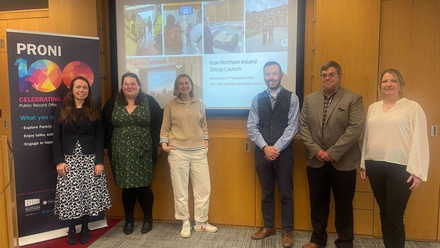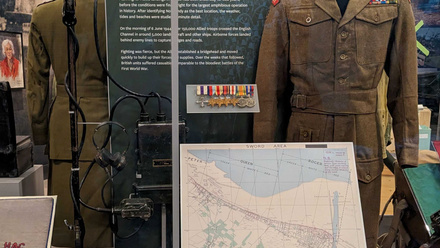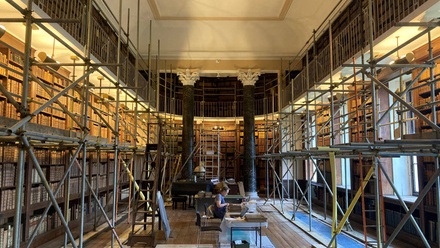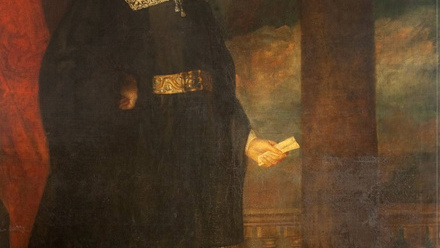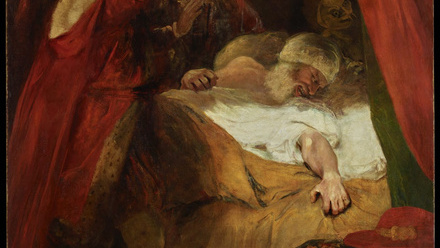On rare occasions a conservator will encounter an artwork that becomes an old friend over time.
In the early stages of my career, a decade-long journey began researching an Iranian lusterware bowl in the collection of the Ashmolean Museum. The 13th century bowl is extremely large for its type at nearly 50cm in diameter, and finely painted in the Kashan style with moon faced figures in reserve on a dense pattern of scroll work.
This object was selected as one of the highlights for the redevelopment of the Islamic Middle East Gallery. It had been heavily overpainted before entering the collection in 1956, and by 2008 the restorations had yellowed considerably. Prof Oliver Watson, a leading expert on Islamic ceramics, was particularly enthusiastic about removing the overpaint to reveal the lustre motif below.
During treatment, striking variations in glaze and body colour became apparent. It was also noticed that portions of the inscription were scratched into the glaze, rather than fired, and some of the shards appeared to have been distressed intentionally. It would have been an advantage to dismantle the object for further study, but it was not possible due to the timeframes of the redevelopment project. Instead, the bowl was displayed in the new galleries after consolidation and repainting of the existing joins and fills.
Further research became possible in 2014, thanks to the generosity of Richard and Gilliane Sills – who gave a bequest for the conservation of ceramics in the Islamic Art collection. Curator Dr Francesca Leoni made brief survey of the collection, and the decision was made to revisit the Kashan bowl. The aim of the project was to stabilise the object and study the discrepancies in the shards.
The vessel was dismantled, and the resulting 158 shards were cleaned and examined - revealing the object had undergone a sequence of restorations over time. Compositional analysis of the body, glaze and lustre decoration was carried out with Micro-X-Ray Fluorescence by Dr Kelly Domoney and Prof Andrew Shortland at Cranfield University’s Forensics Institute.The analysis confirmed that the object was made of two distinct types, one of which appeared to be a fired restoration made to fit the incomplete 13th century bowl.
Although fired restorations were suspected, identification has wider ramifications because the complex technique of lustre decoration was replicated. It is not uncommon for Islamic ceramics to be pastiches made of shards from multiple objects, but up to this point fired restorations had not been definitively identified.
The fact that nearly half of this important object was not original presented a significant challenge for display. Strong arguments could be made for keeping the restoration due to its intertwined history with the object. A counter argument was also made due to the difficultly in differentiating between the restoration and original, even for expert art historians.
Fortunately, was possible in 2015 to have samples analysed by Scanning Electron Microscope by Dr Moujan Matin at the Research Laboratory for Archaeology and the History of Art, University of Oxford. Dr Matin was able to provide additional insight into the composition and firing – indicating a 20th century date for the restoration.
Through dialog with the curator and senior conservators Mark Norman and Daniel Bone a compromise was found. The object was reassembled and displayed in two parts with fired restoration separated from the 13th century section. This approach maintains some visual integrity while also clearly explaining which areas are modern.
The “Fakes and Forgeries” narrative of the display case is very popular with the public and the museum regularly receives positive feedback about it. Subsequent presentations about this project in 2017 have generated interest from conservators working with Kashan lustre objects in other collections which also appear to have fired restorations, implying that this is not an isolated example.
The final stage of the project was the publication of: Leoni et al., The Illusion of an Authentic Experience”: a Luster Bowl in the Ashmolean Museum, (Muqarnas 2019 Vol. 36, p 229-249). The paper includes rigorous research on the provenance and context of the bowl by Dr Leoni, careful documentation of the condition and conservation treatment of the object, and insightful interpretation of the analysis from the scientists.
While the Kashan bowl project moved slowly over the ten years, it pulled us back in repeatedly, and in its captivation more and more rewarding insights were offered each time.
Image: © Ashmolean Museum


